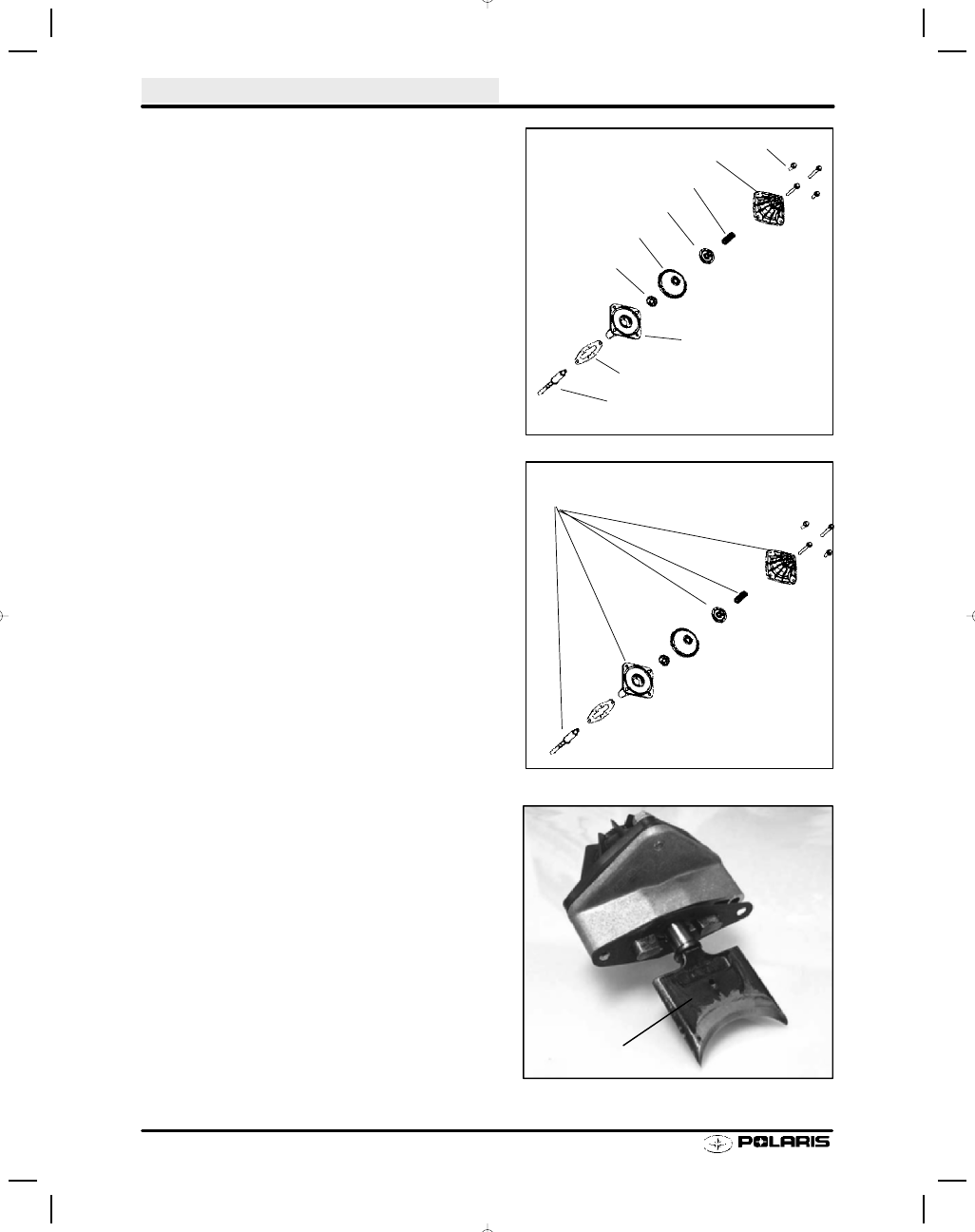Snowmobile Polaris PRO X (2003 year). Instruction - part 19

ENGINE
2.44
V.E.S. Disassembly, Cleaning, Inspection
1. Clean O-ring and bellows in warm water and
mild detergent. Inspect bellows for holes, dis-
tortion or damage. Replace if necessary. In-
spect O-ring for damage.
2. Clean all other parts with solvent. Be sure all
parts are thoroughly clean.
3. Inspect the actuator port in cylinder and valve
housing. Be sure it is clear and not obstructed
by debris or carbon.
4. Carbon deposits can be removed from valve
with a Scotch Britet
pad or similar soft abra-
sive brush.
5. Lubricate exhaust valve with Polaris Premium
Gold 2-cycle engine lubricant. Install valve in
cylinder and move it through the entire travel
range to check for free movement without bind-
ing. If the valve sticks anywhere in the travel
range, check the valve and valve bore in the cyl-
inder for carbon deposits and clean if neces-
sary. Do not remove anodized coating while
cleaning.
Bolt
Valve cover
Spring
Valve cap
Bellows
Washer
Valve housing
Gasket
Valve
Clean with Solvent
Clean with
Scotch Britet
or similar soft
abrasive brush